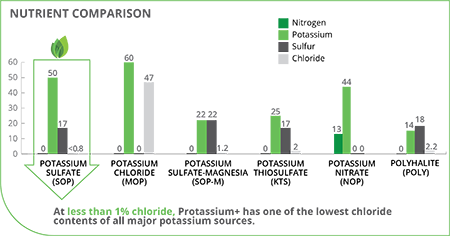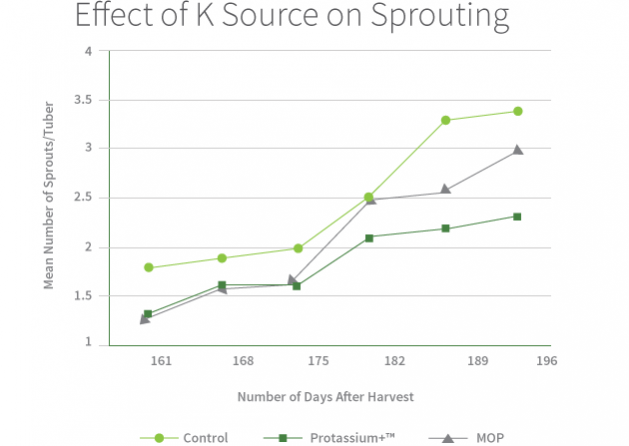How to Win the Potato Storage Loss Battle
More than 70 percent of the total fall U.S. potato crop is placed into storage for year-round use. Proper nutrient management of the potato crop can have a significant influence on how well potatoes endure storage with minimal damage and loss.
According to the U.S. Department of Agriculture (USDA), each year a significant portion of the U.S. potato harvest is lost to storage damage and disease.
In 2019, postharvest losses of the fall potato crop were estimated at 25 million cwt., or approximately six percent of the total crop (USDA estimate). Postharvest losses can be due to a variety of things including:
- Fungal diseases
- Bruising
- In-storage shrink
- Sprouting
Two key nutrients in your fertilization program that impact storage and overall crop quality are potassium and sulfur.
Arm Your Potatoes With Potassium And Sulfur
University research has shown that potassium is vitally important to the production of top-quality potatoes. As a matter of fact, potassium is taken up by potato plants more than any other nutrient. A 500 cwt. crop removes as much as 280 lbs. of potassium per acre annually.
During the six weeks after plant emergence, potatoes take up two-thirds of the season’s potassium requirement. In addition to boosting potato yields, potassium also contributes to crop quality by reducing blackspot bruising, increasing specific gravity, and enhancing chip and fry color.
Sulfur is critically important in the production of amino acids and protein, which creates the photosynthetic energy needed to build starch in the tuber. This process is vital during tuber initiation and bulking.
It’s important not only to supply these nutrients to the plant, but to choose the right source among many choices available, to optimize plant health and potato yield, quality, taste, color and texture.
Defend Against Storage Loss With The Right Source of K
There are several sources of potassium and sulfur to choose from in potato production – and some contain unwanted elements such as chloride or excess salts. These elements can build up in the soil and contribute to lower yields, lower crop quality and lower profitability.

Chloride can also decrease the specific gravity levels in potatoes, which lowers crop quality in terms of chip and fry color. Lower specific gravity levels can also lead to more storage losses in terms of shrink. Protassium+® premium sulfate of potash (SOP) is the richest source of low chloride potassium, providing equivalent potassium content of 50 percent K2O, commonly referred to as potash. Chemical analysis shows that Protassium+ SOP contains the most efficient balance of nutrients to optimize potato yields, quality and storability.
Better K Source = Better Storability
Work by Colorado State University comparing Protassium+ SOP and MOP (Muriate of Potash) revealed that Protassium+ fertilizer improved yield and crop quality in terms of several key storage quality parameters such as delayed sprouting, higher specific gravity and fewer external defects.
Important facts to keep in mind regarding your K source:
- Research has shown that Protssium+ increases specific gravity over MOP.
- Higher specific gravity levels mean more starch and less water in the harvested crop – resulting in significantly less storage loss due to shrinkage.
- The high chloride of MOP (47%) impacts overall quality and storability.
- Protassium+ SOP is 17% sulfur, in readily available sulfate form – plant roots can only absorb sulfur in the sulfate form. The conversion of elemental and organic sulfur can take weeks or even months.
The Right Source To Reduce Sprouting
The following data was compiled by Dr. Samuel Essah at Colorado State University. It shows how potatoes treated with Protassium+ premium sulfate of potash had fewer sprouts per tuber after almost 200 days in storage.

Essah’s data showed that using Sulfate of Potash versus other sources of potassium improved not only yields but crop quality in terms of several key storage parameters such as higher specific gravity and fewer external defects.


